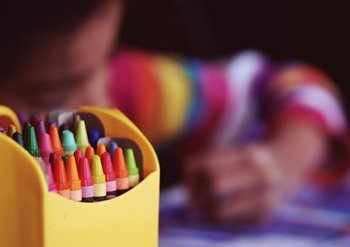We may not be able to control certain things such as public health measures in an ongoing pandemic, but we can control what to do to make things easier on us and our families during this stressful time.
The World Health Organization (WHO) provided a helpful checklist for parents, guardians and caregivers with kids attending school during the pandemic:

1. Monitor your child’s health and keep them home from school if they are ill.
2. Teach and model good hygiene practices for your children:
- Wash your hands with soap and safe water frequently. If soap and water are not readily available, use an alcohol-based hand sanitizer containing at least 60% alcohol. Always wash hands with soap and water, if hands are visibly dirty.
- Ensure waste is safely collected, stored and disposed of (schools are often sending this back home so check backpacks and lunch bags to remove waste daily).
- Cough and sneeze into a tissue or your elbow and avoid touching your face, eyes, mouth and nose.
4. Prevent stigma and stereotypes by using facts about COVID-19. Remind students to be considerate of one another.
5. Coordinate with the school to receive information updates and ask how you can support school safety efforts (e.g. through parent-teacher committees, etc.)
 Communication is important in any time of stress. If your school isn’t providing regular updates on safety measures, which many already are, ask a school teacher or administrator to provide the information in a manner that is convenient for you, like email, printed letter, and so on.
Communication is important in any time of stress. If your school isn’t providing regular updates on safety measures, which many already are, ask a school teacher or administrator to provide the information in a manner that is convenient for you, like email, printed letter, and so on.
Setting up structure and support
Here are a few more tips that may also be helpful as the school year gets underway. Provided by the Children’s Hospital of Eastern Ontario (CHEO), these tips will provide much-needed structure and support that will benefit you and your child, and hopefully help in reducing daily stressors.6. Support social connections
• Continue to encourage your child or youth to stay social with their friends and peers during holiday breaks. This will help them feel more connected by the time they get back to school. Ideally, this involves face-to-face connections outside, as per COVID-19 physical distancing requirements.
• If they can't meet face-to-face, try a lively video call or encourage your child to write a letter to a friend.
7. Establish routines
• Gradually get back into school year structure and routines.
• Talk about routines and re-set expectations. You might say: “Hey guys, with COVID-19, you've had a lot more screen time than usual, but now that school has started up again, we're getting back into our old routine…"
• Set a bedtime (and/or wake up time).
• Set a screen curfew (a “downtime” after which point there are no screens).
• Ask your child about new routines they’d like to continue. “What new COVID-19 routines would people like to continue during the school year? For example, regular family walks after dinner; family dance night, etc.
• Write down the new school-year schedule in an easy-to-find place to keep yourself and your kids on track.
8. Help your child continue to cope
• Stay connected to your kids. Kids do best when they feel loved by their caregivers, which happens when you spend quality time with them and listen, validate and empathize with their feelings (as opposed to seeing adults respond as angry, stressed out, upset, and emotionally unavailable to them).
• Model healthy coping. Kids do best when they learn healthy ways to cope with adversity, such as following public health recommendations with masks and physical distancing (as opposed to unhealthy coping strategies like focusing on negatives and blaming).
• Attach positive meaning to the pandemic. Kids do best when they can have a positive meaning of a situation. You might say: “On one hand, this pandemic has not been easy. On the other hand, we’ve been able to have more fun times together -- and learn new things like how to cut each other’s hair!”
9. Ease your child's worries
Does your child seem to have excessive fear and anxiety about COVID-19? Pandemic-era restrictions such as restricting parents from entering the school may lead your child to feel more isolated or nervous.
• Ask about their fears and try to reassure or problem solve. Ask your child open-ended questions like "What worries you the most?"
• Validate and accept your child's feelings about the situation. You might say: " “I can see why you might be feeling (insert your child's feelings here) about this.”
• Give your child a sense of control. Let them pick their clothes for the day or pick their breakfast by providing a few options from which to choose.
10. Take care of yourself
Your own health and wellbeing are incredibly important. Parents, guardians, and caregivers have added pressures during the pandemic, so checking in with your own feelings and needs is encouraged. If you need support with self care, reach out to a professional, such as a family doctor or counsellor, to connect with community resources for your mental health. The Canadian Red Cross also features a self care component as part of its online Psychological First Aid course, which you may find helpful
During these uncertain times, parenting and caregiving has become more complex and demanding.
Focusing on what you can control and making your own wellbeing a priority will equip you with tools that will help you go the distance.
As always, if you have questions about your health or the health of your child or other dependent, ask your health care provider. Download the free Red Cross Psychological First Aid pocket guide to have more practical tips on hand.
Related stories:

